Resource Management Software | Employee Performance Tracking Software
Blog
The Ultimate Guide to Reducing Employee Turnover with Data-Driven Retention Strategies

Introduction
Employee turnover is one of the most pressing challenges for modern businesses. Beyond recruitment and training costs, high turnover rates lead to loss of institutional knowledge, decreased morale, and disrupted team dynamics. While many organizations attempt to address this issue through reactive measures, the most effective approach today is proactive, strategic, and deeply rooted in data.
In the era of digital transformation, companies now have access to real-time insights that can revolutionize how they manage and retain talent. Leveraging the right data and tools, businesses can not only reduce turnover but also build a more engaged, motivated, and future-ready workforce.
The True Cost of Employee Turnover
When an employee leaves, the costs extend far beyond hiring a replacement. Studies estimate that replacing a single employee can cost up to 50-200% of their annual salary, depending on their position. These costs include recruitment, onboarding, training, and lost productivity during the transition period.
Moreover, turnover negatively impacts team morale. Remaining employees often experience increased workloads, uncertainty, and stress, which can further propagate disengagement and attrition. High turnover also affects customer relationships and brand reputation, especially in client-facing roles.
Why Traditional Retention Strategies Fall Short
Traditional retention strategies—such as annual appraisals, salary revisions, and occasional team-building activities—are no longer sufficient in today’s dynamic workplace. These approaches tend to be reactive, applying surface-level fixes without addressing the root causes of employee dissatisfaction.
Employees today seek purpose, growth, flexibility, and recognition. Without regular feedback, transparent career paths, and data-backed decisions, organizations risk missing the signals of disengagement until it’s too late. This is where data-driven retention strategies come into play.
Leveraging Data for Proactive Retention
Data enables businesses to shift from a reactive stance to a predictive, preventive model of employee retention. By analyzing workforce trends, organizations can identify early warning signs of attrition, understand what drives engagement, and tailor strategies to different employee segments.
Data sources can include:
- Employee performance and productivity metrics
- Engagement surveys and feedback tools
- Attendance and absenteeism trends
- Career progression patterns
- Exit interview analysis
- Training and learning participation
When integrated properly, these data points provide a holistic view of employee health and satisfaction, enabling leaders to take timely, informed action.
Key Data-Driven Strategies to Reduce Turnover
1. Identify At-Risk Employees Early
Using predictive analytics, businesses can detect patterns that indicate potential attrition—such as declining performance, reduced engagement, or frequent absenteeism. This allows HR teams to intervene early with personalized support or engagement initiatives.
2. Customize Employee Development Plans
Data can help tailor learning and development plans based on individual performance, skill gaps, and career aspirations. When employees feel their growth is prioritized, their commitment to the organization increases significantly.
3. Monitor Workload and Burnout Indicators
Overworked employees are more likely to leave. Resource utilization data can identify individuals who are consistently over-allocated, enabling managers to rebalance workloads and prevent burnout.
4. Align Roles with Skills and Aspirations
A mismatch between roles and employee expectations is a common reason for attrition. Skill profiling and performance data help ensure that people are placed in positions where they can excel and find meaning in their work.
5. Track Managerial Effectiveness
Manager quality has a direct impact on employee satisfaction. Analytics can evaluate team turnover rates, feedback from direct reports, and engagement scores to assess and improve managerial performance.
How Clousys Helps Organizations Retain Talent
Clousys offers an integrated Professional Services Automation (PSA) platform that empowers organizations with data-driven tools for workforce optimization and employee retention. Here’s how Clousys helps:
Centralized HR Data
Clousys HRMS consolidates employee records, performance reviews, leave histories, and engagement feedback in one place. This holistic view makes it easy to identify patterns and track employee well-being over time.
Real-Time Utilization Insights
Clousys Resource Management (RMS) provides real-time visibility into workload allocation and utilization rates. This helps managers identify overworked or underutilized employees and rebalance assignments to maintain morale and efficiency.
Skill Deficiency Matrix
Using open demand and resource requests, Clousys identifies skill gaps and suggests areas where training should be focused. This helps businesses invest in the right areas of development and ensure workforce readiness.
Predictive Retention Analytics
Clousys dashboards allow HR teams and leadership to track employee engagement, performance drops, absenteeism, and other risk indicators. With these insights, proactive strategies can be implemented to retain top talent.
Automated Workflows
From onboarding to appraisal and exit, Clousys streamlines key HR processes, freeing up HR professionals to focus on strategic planning and employee engagement. Employees enjoy smoother experiences, which improves overall satisfaction and loyalty.
Performance-Linked Feedback
Continuous feedback loops integrated into Clousys allow employees to receive timely recognition and coaching. This fosters a culture of transparency, growth, and accountability.
Conclusion
Employee retention is no longer just about offering perks or competitive compensation. In 2025 and beyond, organizations must adopt a more scientific, data-driven approach to understand what drives employee satisfaction and how to proactively address the risks of turnover.
With the right tools—like Clousys—businesses can integrate workforce data across HR, resource management, and project systems to create a complete picture of employee engagement and performance. By leveraging these insights, companies not only reduce turnover but also build a resilient, productive, and engaged workforce that drives long-term success.
Organizations that invest in data-driven retention today are better equipped to thrive in tomorrow’s competitive landscape. Let Clousys be your strategic partner in that journey.

